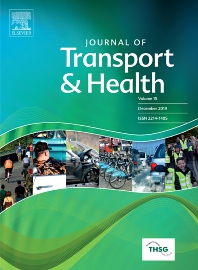PDF | Journal of Transport & Health, Vol. 15, December 2019
Schreuer Naomi , Pnina Plaut, Golan Lihi, and Sachs Dalia
Abstract
Introduction – Most research on the built environment and active travel focused on the general population or segments including children, adolescents and older adults. There is limited knowledge regarding the built environment and active participation of people with disabilities. This most vulnerable population is at risk of reduced engagement in physical and social activities and of developing secondary chronic health conditions. The present study examines the relationship between people with disabilities’ participation in daily activities, self- reported environmental barriers and objective urban spatial walkability measurements.
Methods – A cross-sectional study was conducted among 137 adults with various disabilities. A self-reported questionnaire collected demographic, residential, disability characteristics, and participation in 41 daily activities data. The Craig Hospital Inventory of Environment Factors (CHIEF) examined perceived environmental barriers. Geographic Information Systems (GIS) analyzed participants’ residential neighborhood (street connectivity, land use mix, slope, housing density and socioeconomic status).
